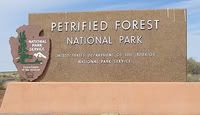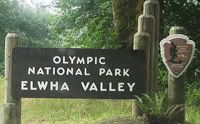Yosemite National Park, set amongst the Sierra Nevada mountains, was declared a national park on October 1, 1890. The park contains many natural wonders, such as waterfalls, granite domes and monoliths, meadows and forests that contain giant sequoia trees, which are some of the world's largest living things. It was a favorite place for famed photographer Ansel Adams and naturalist John Muir, and remains a favorite place for visitors from all over the world.
During this trip, I took a few short hikes to Yosemite Falls, Happy Isles and to Mirror Lake. These are short, easy hikes, but the park is also full of long, strenuous hikes for the seasoned hiker and backpacking through the backcountry for backpackers. It also offers spectacular rock formations for rock climbers and lush meadows for bird and wildlife watchers. Several campgrounds are in the park, as well as more luxurious accomodations at places like the Ahwanee Hotel. We stayed at Curry Village in a tent cabin, which was perfectly fine with me. At Curry Village, there are all the amenities that a person could need: a gift shop/grocery store, sports gear shop, pizza place, dining hall, taqueria, shower house and an ampitheater where rangers give talks in the evenings. There is a also a free shuttle bus that takes you to several points of interest and trailheads in the valley.
The park is open 24 hours a day and costs $20 per vehicle to get in, which is good for 7 days. You don't need reservations to enter the park, but if you plan on staying overnight, reservations at a campground are a very good idea, as the campgrounds fill up very fast, and if you don't have a reservation, you may end up without a place to stay.
At this time, the road to Glacier Point and Tioga Road remain closed due to snow. There is no current estimated opening date, but those roads probably will remain closed til mid-summer. Also, there is road construction going on within the park and some parts of the road are inaccessible at this time, which is creating more traffic within the park, so expect delays.
Despite the traffic and all of the people visiting the park, it is a great place to go, whether you like to climb rocks or just go for a nice stroll through the meadow. One of the most beautiful places I went to this time was Mirror Lake. In the spring, this "lake" (which is actually more of a shallow pond), is full and the reflection of Mt Watkins in the water shows how the lake got its name. In the summer however, the waters recede til there is no lake to be seen. Still, I imagine even with the lake gone, it would still be a pretty place to visit. Plus, the trail, although a mile long, is easy and paved, and is scenic and offers plenty of shade. It is also accessible to those with disabilities, as vehicles displaying a handicapped placard can drive up the road. This is a big plus, because I think this is a place that everyone should be able to see in person. Pictures of it really don't do it justice.
At the end of the trip, I was worn out from driving and my feet were hurting, but it was worth it. I love Yosemite! I posted quite a few pics below and you can see the entire photo album by clicking HERE. Enjoy!
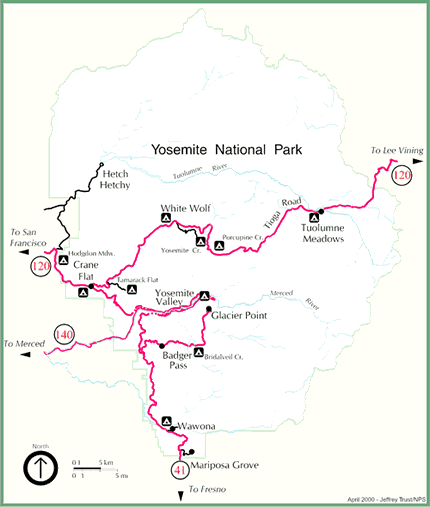
Links:
The lore and lure of Yosemite
Info on campgrounds in Yosemite
Yosemite Home Page
Current Conditions in Yosemite
Food Storage Info
Things to do in Yosemite
Yosemite Web Cams
Yosemite




















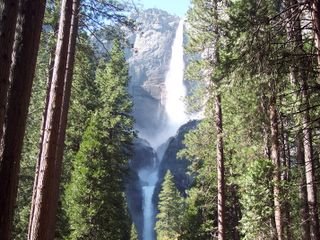







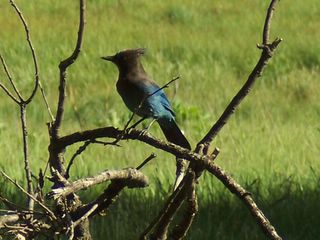



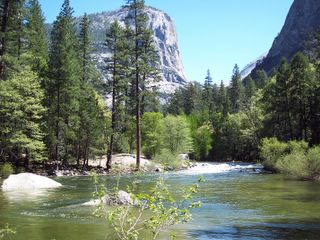




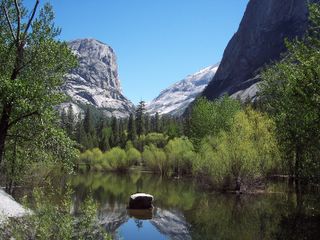








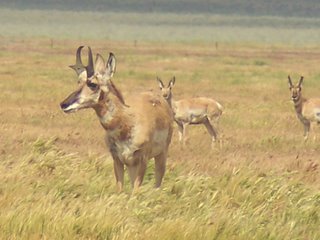


















 Grab my blinkie if you wanna
Grab my blinkie if you wanna



































 (Click on the links below to go there.)
(Click on the links below to go there.)




 Click the moose to sign my Guest Book
Click the moose to sign my Guest Book








 My "pet"
My "pet"

 Visit CALM
Visit CALM




